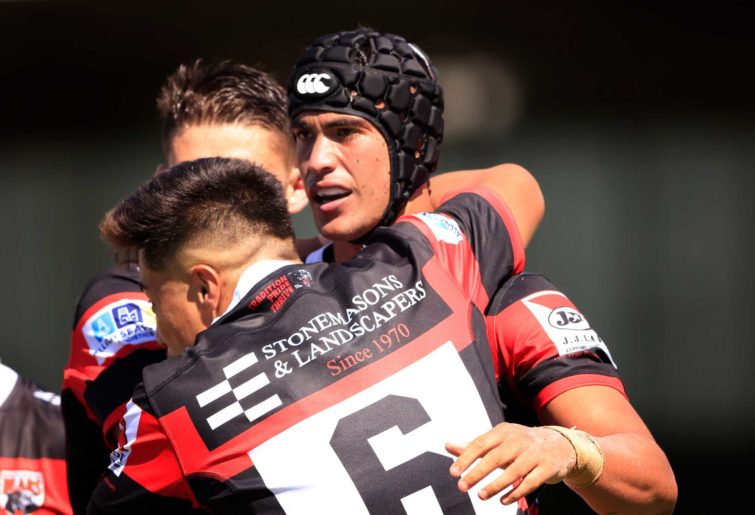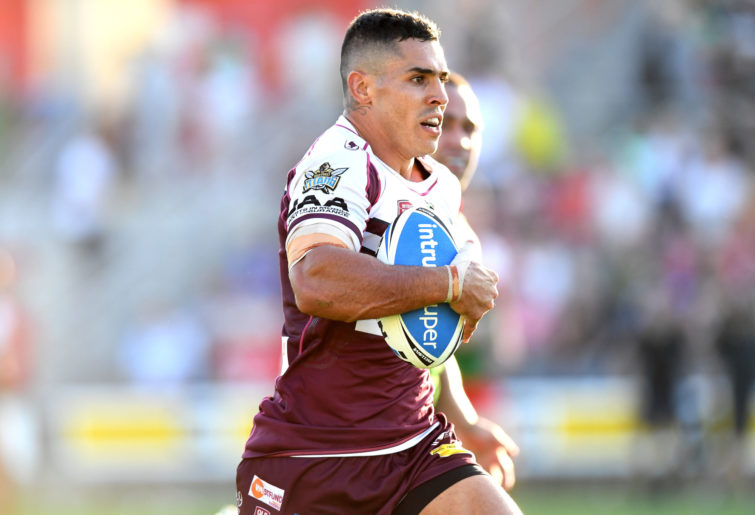With the addition of the ‘Insert name here’ Dolphins to the NRL in 2023, talk has already turned to when and where an 18th team will be introduced.
This seems quite premature, given the Dolphins have barely finalised their name and are yet to so much as assemble a playing roster, but we are all a creative lot and are all CEOs at heart. So, I figured I may as well give it a go too.
The obvious benefits of an additional team are the extra game each week, which increases revenue from broadcasters, removes the weekly bye and provides exposure to new audiences. The obvious detractions are that there isn’t enough first grade-standard playing talent as it stands to fill two new teams.
The NRL’s goal is to secure its financial future, made even more important due to the bottom-line impact of the COVID-19 pandemic. No expansion is low-risk right now, but failing to act could see rival sporting codes extend their reach and revenue into traditional rugby league heartlands.
Increased pathways in other sports could reduce the talent coming to the NRL, and increased revenue from rivals could result in luring the best talent away from the game.
Given that, the NRL needs a greater presence in the Australasian region to secure its financial future, but expansion of the NRL to 18 teams – or more – may not be the only way to provide sustainable growth.
>> READ: Matty Johns’ pick for 18th NRL team
My solution is to create a second-tier rugby league competition. It would be geographically distinct from the NRL, Australasian-wide and responsible for generating its own broadcast revenue. This would allow the NRL to expand into multiple new areas at once at a lower cost, without adding additional teams to the NRL.
It will also provide a natural stepping stone for prospective NRL teams in the future, and give new franchises the chance to build their supporter bases, pathways and football departments.
This would be a bold change and would require some upfront investment from the NRL, but it’s a move I believe would reap huge benefits moving forward. Let’s see how this could work.
Competition Structure
So, which clubs and regions could be considered?
The first step is to promote existing clubs from the NSW and QLD Cups. There is still scope for expansion in Brisbane in the future, despite the existence of a second NRL team alongside the Broncos now; so the two unsuccessful expansion bidders, the Jets and Firehawks, could form their own new rivalry in this competition.
The Central Queensland Capras and the Mackay Cutters could merge and represent both central and northern Queensland. The Sunshine Coast Falcons could also generate some support.
NSW is well represented in the NRL and there is no need for expansion there, but the state still needs representation in my proposed new league. The Central Coast Bears could fit in nicely, by representing that region and reviving some of the lingering North Sydney Bears sentiment.

Joseph Suaalii of the Bears celebrates a try during the NSW Cup Trial Match between the North Sydney Bears and the Canberra Raiders at Seiffert Oval on February 27, 2021 in Queanbeyan, Australia. (Photo by Mark Evans/Getty Images)
The Newtown Jets’ popularity makes them an obvious candidate; if the Tigers are unwilling to bite the bullet, Wests Magpies could be resurrected to specifically represent south-west Sydney.
Western Sydney could then be represented by the Blacktown Workers, with the team centred around the new airport – a pity the Jets name is already taken. The NRL is focused on improving country rugby league, so a NSW Country team which represents and travels betwen regional towns could also be a great idea.
Perth is the obvious expansion team from outside rugby league heartland, to give the NRL a more complete national footprint. Another Victorian team is an option alongside the Melbourne Storm, as is rebirthing a team in Adelaide (though perhaps not quite yet).

Jamal Fogarty of the Bears in action during the Intrust Super Cup Grand Final match between the Wynnum Manly Seagulls and the Burleigh Bears at Dolphin Stadium on September 29, 2019 in Brisbane, Australia. (Photo by Bradley Kanaris/Getty Images)
Internationally, a second New Zealand team on the South Island is a no-brainer; perhaps even a 3rd team is an option to create a local rivalry there. The Papua New Guinea Hunters should be included as they have already made into the QLD Cup, and have pointed to further facilities back home. Another Pacific Islands team would be great for the game; either as a standalone Fijian side or a combined team from the region. In future, it may even be plausible to add Japanese or American teams, but let’s not look that far beyond our borders just yet.
I really like the idea of adding an Indigenous Australian representative team into the mix. They could be quite a drawcard for Indigenous talent to come and play rugby league over other codes like the AFL. I won’t attempt to name this team, but I can imagine some awesome jersey designs, and it’s easy to get excited about some of the footy a team like this could play. If the NRL are so inclined, the new team could be a perfect starting point for the league to assist in awareness and funding with Indigenous programs across the country.
Possible Competition Structure
1. Brisbane Firehawks
2. Ipswich/Western Corridor Jets
3. Central Queensland Cutters (merger of Central Qld Capras and Mackay Cutters)
4. Newtown Jets
5. Wests Magpies
6. Blacktown Workers (potential name change)
7. Central Coast and Hunter Bears
8. NSW Country
9. Australian Indigenous
10. Perth
11. Melbourne
12. New Zealand (South Island)
13. Papua New Guinea
14. Pacific Islands/Fiji
Playing Talent and Quality
You might be wondering if the playing quality would be any different to the current NSW and QLD Cup competitions. It is a fair point, but my answer is that this competition would concentrate that playing talent more effectively than the current system, as well as help to retain some of the talent that might normally go overseas or retire altogether.
The NSW and QLD Cups combined had 25 teams run around in total in 2021. A competition of around 14 teams would almost halve this, ensuring the best talent from those competitions would be playing.
With investment from the NRL and broadcasters, player payments can increase, which will encourage fringe NRL players to stay in Australia rather than heading overseas.
Perhaps the likes of Jackson Hastings could have rediscovered himself playing for Perth instead? Imagine if you could still go and watch Benji Marshall run around for another few years? James Maloney is another one who could be playing in Australia rather than the second-tier in France. Sam Burgess wanted to come back, as did Greg Inglis. Add in the likes of young guns Joseph Suaalii, Sam Walker, Jayden Sullivan, Tyrell Sloan, Jayden Campbell, Blake Taafe, Piakura and the next batch of superstars, with a dedicated competition for them to strut their stuff in rather than having to bide their time before cracking their first-grade sides.
This competition would be really entertaining.
Revenue
The biggest question over my plan is, of course, how it will be funded.
The first step will be to ensure as many clubs as possible can be financially self-sufficient. The two unsuccessful bids for the 17th NRL team were strong, and meet that requirement comfortably. The Perth and Central Coast bids were also relatively strong; scale these back a little and they could still be self-sufficient. The opportunity for future promotion is sure to encourage some private funding.
In terms of broadcasting appetite, the new geographical areas and local buy-in to those areas should ensure there is an audience for viewing these games on TV as well as attending them. This should attract some new viewers and engage some existing viewers to watch additional games, and so would not cannibalize the existing NRL viewership.
The playing standard should ensure a decent level of interest as well, particularly when some of the game’s gun teenagers are running around alongside some older superstars like Marshall or Maloney. Fox League chose to televise a North Sydney Bears trial game earlier this year due to the hype around Joseph Suaalii and Sam Walker, so there is certainly interest in certain players competing at this level.

Joseph Suaalii of the Roosters looks dejected after the Roosters were defeated by the Pamthers during the round 15 NRL match between the Penrith Panthers and the Sydney Roosters at Panthers Stadium, on June 18, 2021, in Penrith, Australia. (Photo by Mark Kolbe/Getty Images)
Channel 7 have made enquiries into the next NRL broadcast deal, so perhaps this competition could be a good investment for them to showcase the quality of their coverage to the NRL ahead of a prospective first-grade challenge of Channel Nine. Fox League could potentially play the game of the round as well, if interested. There are a couple of additional timeslots over the weekend and on Monday that can be used to have most games in separate timeslots to the NRL.
Add to that naming rights of the competition, and that the additional visibility will give clubs better access to sponsorship as well, and with the right investment, the new competition could prove a money-spinner.
Expenditure
The expenditure of starting a new competition from scratch is obviously high. Then there is the additional club funding, increased player payments, venue hire, event costs, travel, advertisement, regulatory services, insurance, and general management to consider. However, much of this can consolidated with the current expenditure for the NRL.
Promoting existing clubs means they should have a lot of the systems, infrastructure, and day-to-day operations already in place. The are plenty of opportunities for double-headers with NRL matches to reduce venue hire, event costs, advertisement, and travel.
Much of the players’ salaries will already be paid for by an NRL club, so total roster payments may not be as high as expected. It may also be an opportunity for NRL clubs to offload some underperforming players and get some financial relief.
At least initially, the expenditure may well exceed the revenue, but this is an investment in the NRL’s future which is sure to reap rewards down the track.
The Clubs
The other part to this is the agreement of the NRL clubs and there are both positives and negatives.
If the numbers stack up, the clubs would surely be keen to encourage improving the financial sustainability of the game, and ensuring as high a standard of competition as possible for their fringe and emerging players.
What they won’t like is losing what form of control they have on how their fringe and young players are played. It would also be likely that some NRL clubs could have closer proximity to these teams and get benefits from that. Both are undoubtedly issues, but in my view the benefits outweigh the downsides.
Overall, I think this idea could take rugby league and the NRL to the next level. The time to do it is now.
































































































